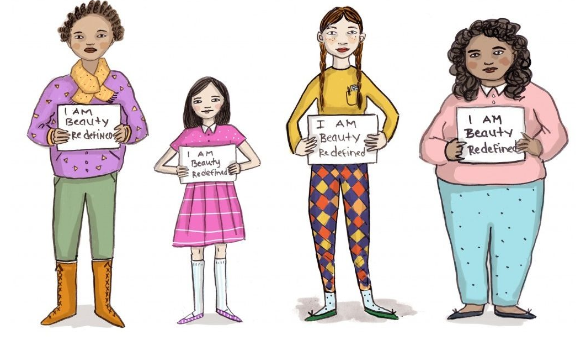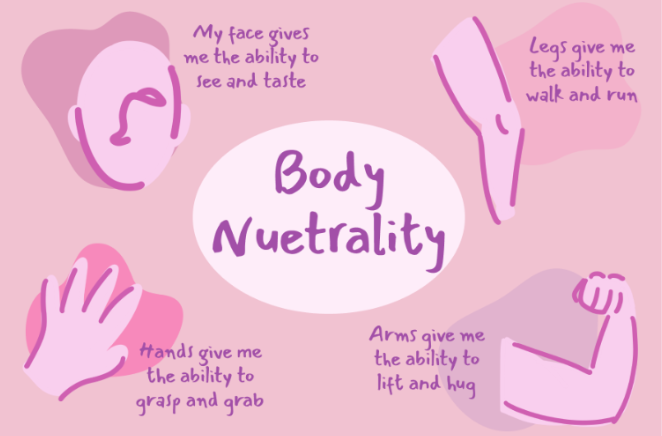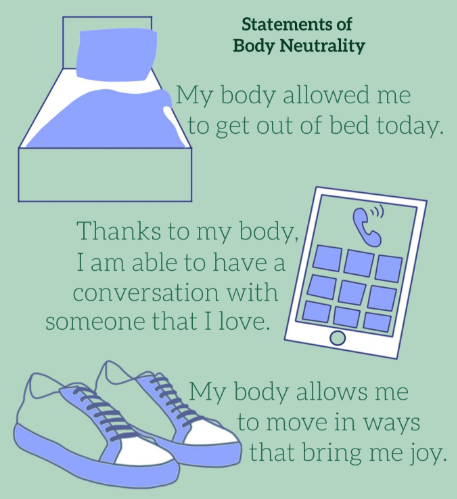In today’s society, the conversation surrounding body image and self-acceptance is more important than ever before. With social media and other platforms putting pressure on people to conform to a certain beauty standard, it’s very easy to feel insecure about one’s appearance.
However, over time, two different approaches, both rooted in feminism itself, have emerged to help individuals navigate these feelings and as a movement against the trolling mindset of the online community and fatphobia: body positivity and body neutrality.
Body Positivity: Embracing Self-Love and Acceptance
Body positivity is a movement that has gained significant traction in recent years. It encourages individuals to love and accept their bodies, regardless of size, shape, or other physical attributes. The goal of body positivity is to promote self-love, confidence, and overall well-being.
One of the key aspects of body positivity is challenging societal norms and expectations surrounding beauty. The movement seeks to break down the unrealistic beauty standards perpetuated by the media and encourages individuals to embrace their natural selves. This movement focuses on challenging the mainstream beauty standards that favour thin, able bodies over overweight and obese bodies. Body positivity also emphasises the importance of inclusivity, celebrating diversity and promoting acceptance for all body types, regardless of age, gender, race, or ability. One of the main goals of the Body Positivity movement is to increase media visibility of all body types and stop people from shaming bodies that don’t fit into the concept of the ‘ideal’. It also focuses to reduce the negative emotions about one’s body and tackle body image issues.
Body positivity has been championed by many celebrities and influencers, who have used their platforms to promote self-love and acceptance. These manifest on popular social media platforms like Instagram through hashtags like #bodypostivity and #BoPo. However, some have criticized the movement for focusing too heavily on physical appearance and putting pressure on individuals to feel positive about their bodies at all times and not giving them space to be themselves.
Another issue is that corporates and influencers have hijacked the movement, who ask followers to embrace their bodies but at the same time market and advertise appetite-reducing medicines and supplements. The Body positivity movement is being accused of promoting toxic positivity. So rather than addressing body image issues, people are forced to feel good about their bodies.
Body Neutrality: Shifting the Focus to Functionality
Body neutrality is a newer concept that has emerged as an alternative. Rather than emphasizing positivity or negativity towards one’s body, body neutrality encourages individuals to shift their focus away from appearance and towards functionality.
The goal of body neutrality is to help individuals detach their self-worth from their physical appearance. Instead of constantly feeling the need to evaluate and judge their bodies, individuals are encouraged to view their bodies as a tool to help them function and achieve their goals. The movement aims to reduce the pressure individuals feel to conform to societal beauty standards and instead promote a more holistic approach to self-care and well-being.
While the former encourages individuals to love and accept their bodies, body neutrality recognizes that this is not always possible or realistic. Instead, the movement aims to help individuals focus on what their bodies can do and achieve rather than how they look like.
Which Approach is Right for You?
Both offer different approaches to promoting self-acceptance and well-being. While some individuals may find that body positivity helps them feel more confident and empowered, others may find the pressure to feel positive about their bodies at all times to be overwhelming. Body neutrality, on the other hand, maybe a better fit for individuals who struggle with body image issues and want to focus on functionality rather than appearance.
Ultimately, it’s up to each individual to determine which approach feels right for them. Some may find that a combination of both body positivity and body neutrality works best to tackle issues of unrealistic beauty standards and negative body image, while others may prefer to focus solely on one approach. The most important thing is to find a way to promote self-acceptance and well-being that feels authentic and sustainable.
-LIYA ANN MARY
Must Read: Same-Sex Marriage In India




